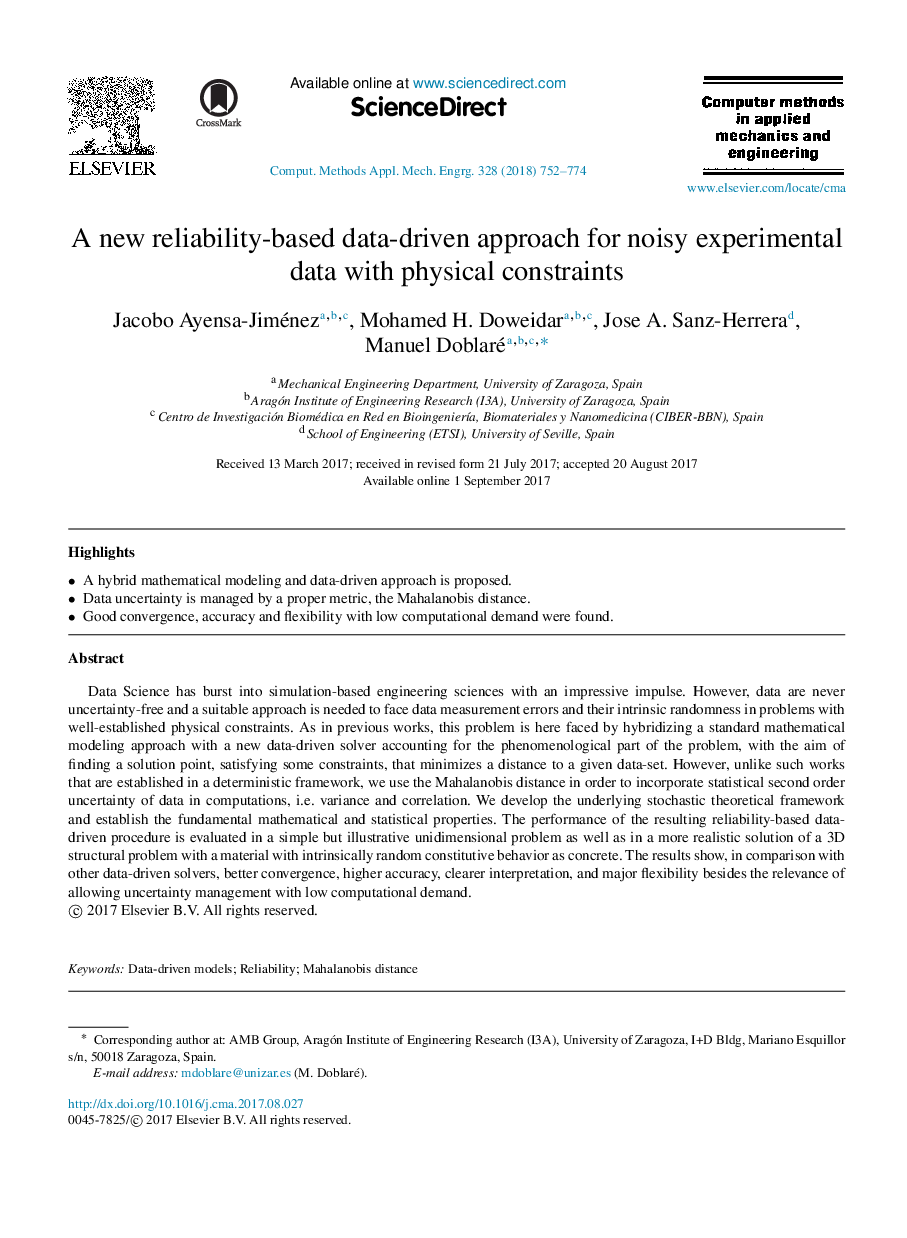| Article ID | Journal | Published Year | Pages | File Type |
|---|---|---|---|---|
| 6915779 | Computer Methods in Applied Mechanics and Engineering | 2018 | 23 Pages |
Abstract
Data Science has burst into simulation-based engineering sciences with an impressive impulse. However, data are never uncertainty-free and a suitable approach is needed to face data measurement errors and their intrinsic randomness in problems with well-established physical constraints. As in previous works, this problem is here faced by hybridizing a standard mathematical modeling approach with a new data-driven solver accounting for the phenomenological part of the problem, with the aim of finding a solution point, satisfying some constraints, that minimizes a distance to a given data-set. However, unlike such works that are established in a deterministic framework, we use the Mahalanobis distance in order to incorporate statistical second order uncertainty of data in computations, i.e. variance and correlation. We develop the underlying stochastic theoretical framework and establish the fundamental mathematical and statistical properties. The performance of the resulting reliability-based data-driven procedure is evaluated in a simple but illustrative unidimensional problem as well as in a more realistic solution of a 3D structural problem with a material with intrinsically random constitutive behavior as concrete. The results show, in comparison with other data-driven solvers, better convergence, higher accuracy, clearer interpretation, and major flexibility besides the relevance of allowing uncertainty management with low computational demand.
Related Topics
Physical Sciences and Engineering
Computer Science
Computer Science Applications
Authors
Jacobo Ayensa-Jiménez, Mohamed H. Doweidar, Jose A. Sanz-Herrera, Manuel Doblaré,
